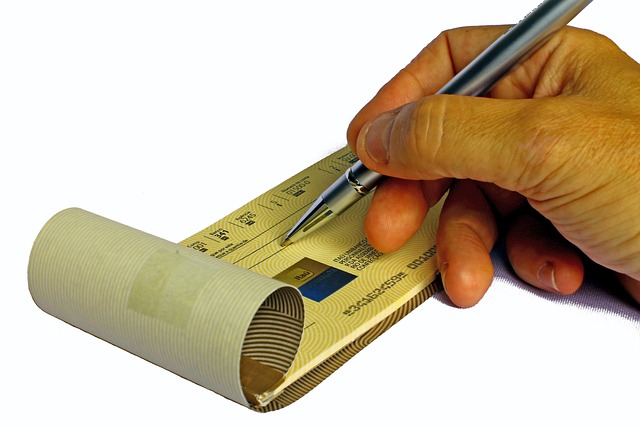
A check is a financial instrument that instructs a bank to pay out of a specific amount of money to the person or entity indicated on the front of the check.
John wrote his housemate Sarah a check to pay for his part of the electricity bills he owed her.
A check is a negotiable instrument, which is to say that it promises the payment of a specific amount of money upon demand or at a certain time. The person writing out a check is called the drawer, the beneficiary is the payee, and the party instructed to pay (i.e., the drawer’s bank) is the drawee. To transfer funds to another person or entity, the drawer fills in the name of the payee, amount of money, date, and his or her signature on a preprinted form (known as the check). The payee will then present this check to the drawer’s bank (indirectly through an automated interbank check clearance system) and upon its basis will receive the stated amount of money. Checks were a common form of cashless payment until the second half of the twentieth century, since which time they have been gradually replaced by payment cards and electronic forms of payment. In the U.S. (and to a somewhat lesser extent in Canada and the UK) checks are nevertheless still quite commonly used. In countries outside the U.S., the spelling “cheque” is used.
Šek je finanční prostředek, který dává pokyn bance k vyplacení konkrétní peněžní částky osobě či subjektu uvedeném na přední straně šeku.
John vypsal své spolubydlící Sarah šek, aby zaplatil za svůj díl účtů za elektřinu, který jí dlužil.
Šek je obchodovatelný nástroj, což znamená, že zaručuje vyplacení dané peněžní částky na požádání nebo v určitý čas. Osoba vypisující šek se nazývá výstavce, osoba, která peníze přijme je příjemce nebo také věřitel, a strana instruovaná k platbě (tj. banka výstavce) je směnečník či šekovník. Pro transfer peněz jiné osobě či subjektu vyplní výstavce jméno příjemce, částku, datum a svůj podpis na předtištěný formulář (tzn. šek). Příjemce následně přeloží šek bance výstavce (nepřímo prostřednictvím automatizovaného systému zúčtování mezibankovních šeků) a na jeho základě obdrží vyplacenou uvedenou sumu. Šeky byly obvyklým typem bezhotovostních plateb až do druhé poloviny dvacátého století a od té doby je postupně nahrazovaly platební karty a elektronické typy plateb. Ve Spojených státech (a v poněkud menší míře v Kanadě a ve Spojeném království) se šeky stále poměrně běžně používají. V anglicky mluvících zemích mimo USA se používá pravopisný výraz „cheque“.
English Editorial Services’ mission is to assist international businesses and organizations of all sizes to communicate clearly, correctly, and persuasively with their business partners and target audiences.
Simply subscribe to receive our Business Term of the Day at no charge to your inbox each business day, with explanation in English and Czech.



English Editorial Services’ mission is to assist international businesses and organizations of all sizes to communicate clearly, correctly, and persuasively with their business partners and target audiences.
Simply subscribe to receive our Business Term of the Day at no charge to your inbox each business day, with explanation in English and Czech.

